Notes: Canada Dock Goods station was the northern terminus of the London & North Western Railway (LNWR) Bootle branch which connected the north Liverpool docks with the Liverpool and Manchester railway. By the 1860s the dock system at Liverpool had begun to spread north, and the new docks were able to take the largest ships of the day. The LNWR wanted direct access to the dock system and obtained an Act to build the Bootle Branch railway which opened to Canada Dock for goods services on 15 October 1866.
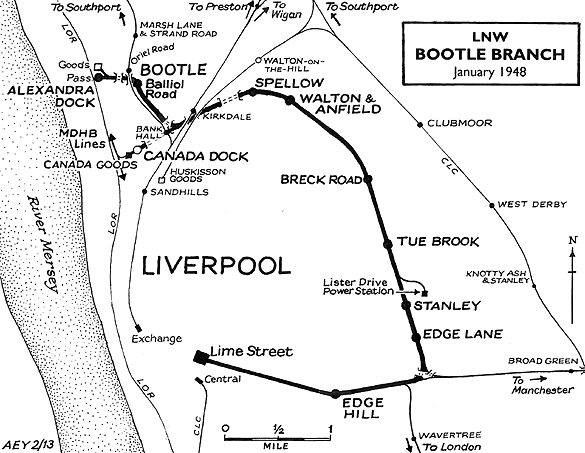 |
The goods station was situated on the east side of Regent Road which ran parallel to the River Mersey and the dock system. The Canada dock itself was on the west side of the road. The LNWR purchased a large area of land between Regent Road and the Leeds & Liverpool Canal, which was to the east. Running along the north boundary was Bankfield Street (to the west of Derby Road) and Bankhall Street (to the east of Derby Road). Two roads also passed over the site running north-to-south: they were Derby Road, a main artery running north from Liverpool, and Bankhall Lane. Both of these roads crossed the goods station site on multi-arched bridges. The Bootle branch gained access to Canada Dock Goods station via the 427yd Canada Dock tunnel, the western portal of which was in the north-east corner of the site. The Leeds & Liverpool Canal passed directly over the western portal of the tunnel.
The goods station was connected directly to the dock system via a line that crossed Regent Road and connected to the Mersey Dock & Harbour Board (MD&HB) railway. The MD&HB had an extensive system of lines that ran along the entire length of the docks. Canada Dock itself was built for the timber trade, and in the early years there were many timber yards in the area.
The station building was located in the north-west corner of the site between Regent Road and Derby Road. It was an iron-framed building infilled with brick, with several floors of warehouse space. The northern side wall of the station ran along Bankfield Street. To the east of Derby Road was a large goods yard with numerous sidings. Access to the station was provided from both Regent Road and from Derby Road. The latter entrance was on the west side of the road and had imposing gates flanked by tall brick walls. As Derby Road was elevated above the line a sloping roadway ran into the station. A separate gateway with a sloping access ramp was provided on the east side of Derby Road adjacent to the northern boundary wall. This gate provided access to a platform at track level. As with most goods facilities at Liverpool during the nineteenth century, Canada Dock goods station was expanded several times during the first thirty years of its life as traffic levels built up.
On 1 July 1870 a passenger station opened at Canada Dock which was named Bootle. It was located to the east of the goods station building, its ticket office being on the east side of Derby Road. The station had a single platform in the middle of the area of sidings and stretched from Derby Road to Bankhall Lane. Passenger services ran between Canada Dock and Liverpool Lime Street.
In the 1871 the Lancashire & Yorkshire Railway (LYR) opened a goods station to the north of Canada Dock on the other side of Bankfield Road known as Bankfield & Canada Goods station. It could be reached by rail only via the MD&HB line.
On 5 September 1881 a line opened from the Bootle branch to a new goods station at Alexandra Dock. It had its junction with the original Bootle branch to the east of the Canada Dock tunnel at what became Atlantic Dock Junction. Such was the level of traffic at Liverpool at this time that another goods station was needed. With the opening of the new line Bootle station was renamed Canada Dock.
On 14 March 1887 the LYR opened a branch line that linked their goods station at Bankfield & Canada to their Liverpool and Southport line.
A signal box opened to the east of the passenger station in 1893. It was an LNWR type 4 box with a brick base and a timber upper cabin. It was fitted with a 30-lever frame. The box was named Bootle No. 1.
 By 1904 Canada Dock Goods station had, in addition to its large building, a cattle dock, a coal unloading area, a cold storage area for the meat trade and a traverser crane. By 1904 Canada Dock Goods station had, in addition to its large building, a cattle dock, a coal unloading area, a cold storage area for the meat trade and a traverser crane.
During the Great War the Liverpool dock system became even busier, and all of the goods stations handled thousands of tons of war materials.
On 1 January 1923 Canada Dock Goods station became part of the London Midland & Scottish Railway (LMS) as did neighbouring Bankfield. There was, however, plenty of work for both of the goods stations.
In 1930 Bootle No. 1 signal box was renamed Canada Dock No. 1. A year later in 1931 it was reduced to a ground frame.
With the outbreak of the Second World War on 3 September 1939 Liverpool found itself to be once again a key strategic port. This time however it was in the direct line of fire. The German Luftwaffe began to bomb Liverpool on 4 August 1940. Dockland facilities were a key target. On 4 May 1941 Canada Dock goods station was so badly damaged that it was put out of action. The goods station building was completely destroyed and the yard flooded as a bomb hit the Leeds & Liverpool Canal. A locomotive managed to escape into the Canada Dock tunnel just as the water level was about to reach its firebox. Great effort was made to get the station open, and trains were running again within a couple of days; however the passenger service was not reintroduced. The last bombs fell on Liverpool on 10 January 1942. Canada Dock continued to play its part in the conflict handling vast quantities of goods but it had no undercover facilities.
After the war a new building was provided. It was much simpler than the original being nothing more than covered sheds. It did make use of the original station north wall, part of which had been left standing. Within the building an overhead traverser crane was provided.
Canada Dock station remained busy until the 1960s. From the mid 1960s onwards there was a decline in the fortunes of Liverpool’s port, and a great deal of traffic moved to the south and the east coast ports. At the same time there was a shift towards road transport. One-by-one the numerous goods stations that served Liverpool’s docks closed. Neighbouring Bankfield closed on 4 January 1965.
By 1973 only two goods stations remained, Canada Dock being one of them - the other being Alexandra Dock. By this time Canada Dock was served by trip workings from Edge Hill. The goods station continued to handle a variety of goods traffic including food items but in ever decreasing amounts. The yard area of the goods station contracted during the 1970s as redundant sidings were taken out of use and lifted.
The last trains ran from Canada Dock goods on 3 September 1982. The ground frame was closed on 12 September 1982 marking the absolute end of rail traffic to Canada Dock. The line to Atlantic Dock Junction was lifted shortly after. The yard area and passenger station remained in a derelict condition until 1992 when the whole area was filled in burying the eastern end of the site and the western portal of the Canada Dock tunnel.
The west end of the site, including the buildings survived and were extant in January 2013, although in a derelict condition.
Sources:
See Also: Canada Dock passenger station and Atlantic Dock Junction
Click here to see Canada Dock goods receipts
|

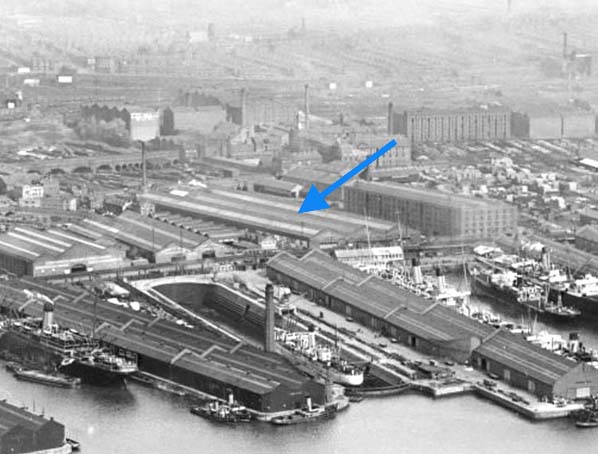



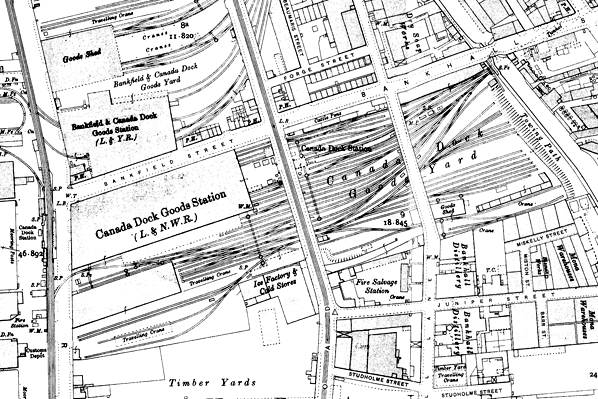
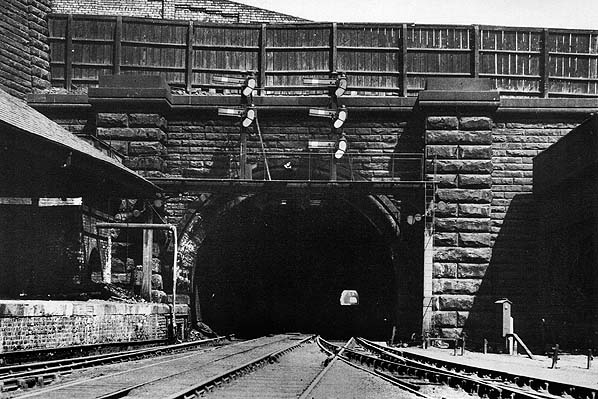
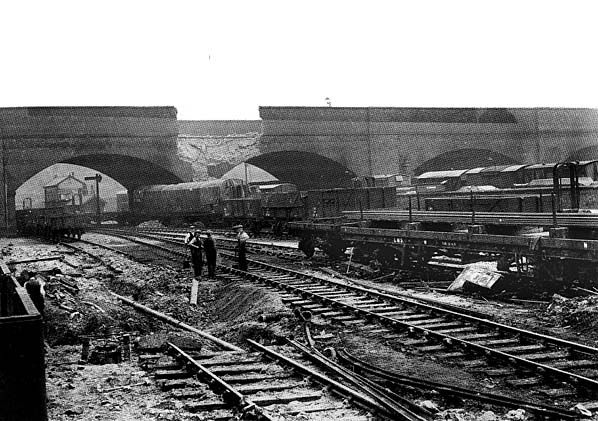
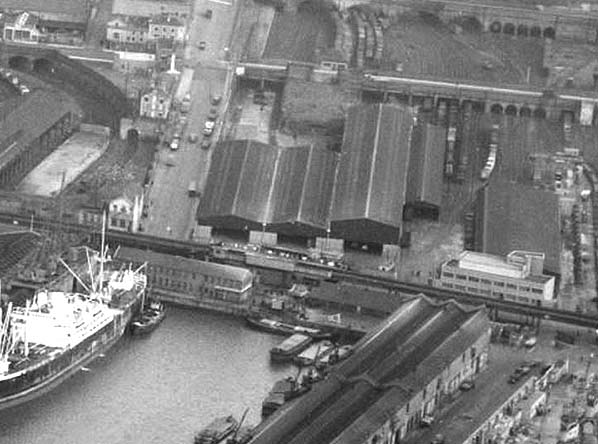
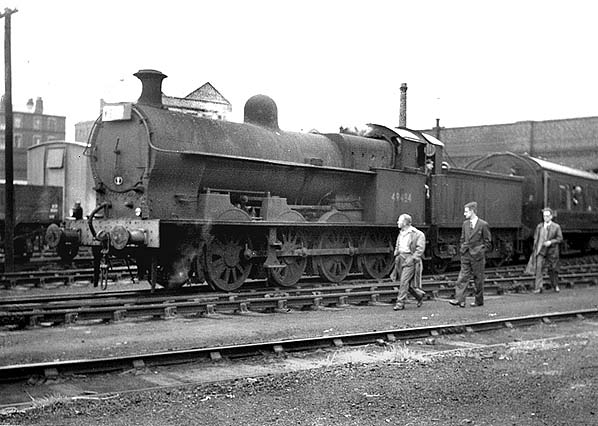
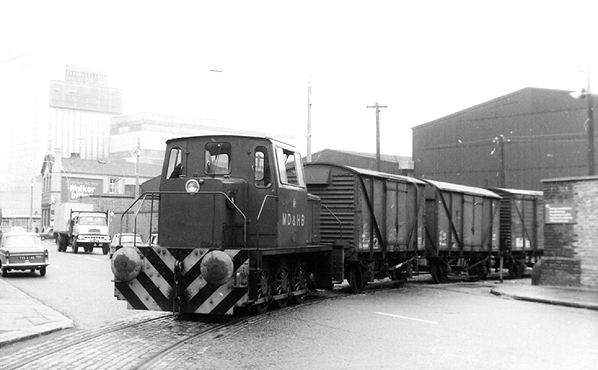
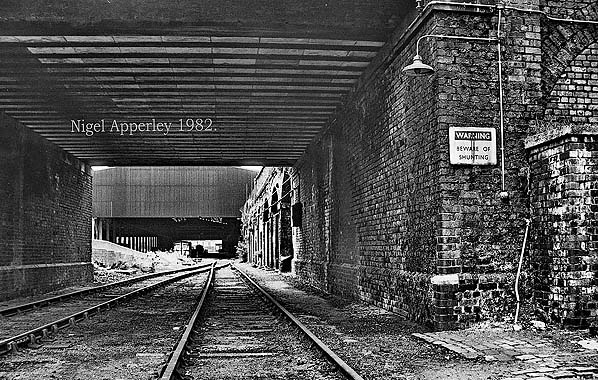

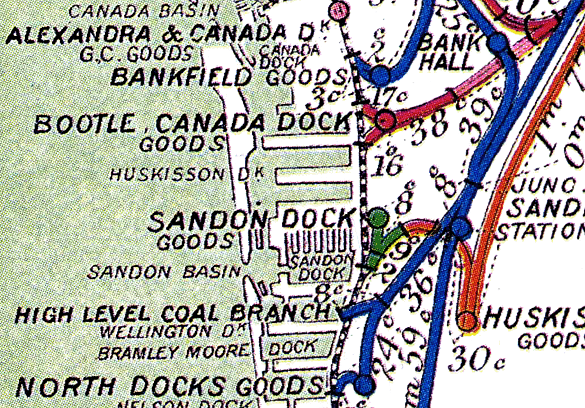
 By 1904 Canada Dock Goods station had, in addition to its large building, a cattle dock, a coal unloading area, a cold storage area for the meat trade and a traverser crane.
By 1904 Canada Dock Goods station had, in addition to its large building, a cattle dock, a coal unloading area, a cold storage area for the meat trade and a traverser crane. 
.jpg)

 Home Page
Home Page